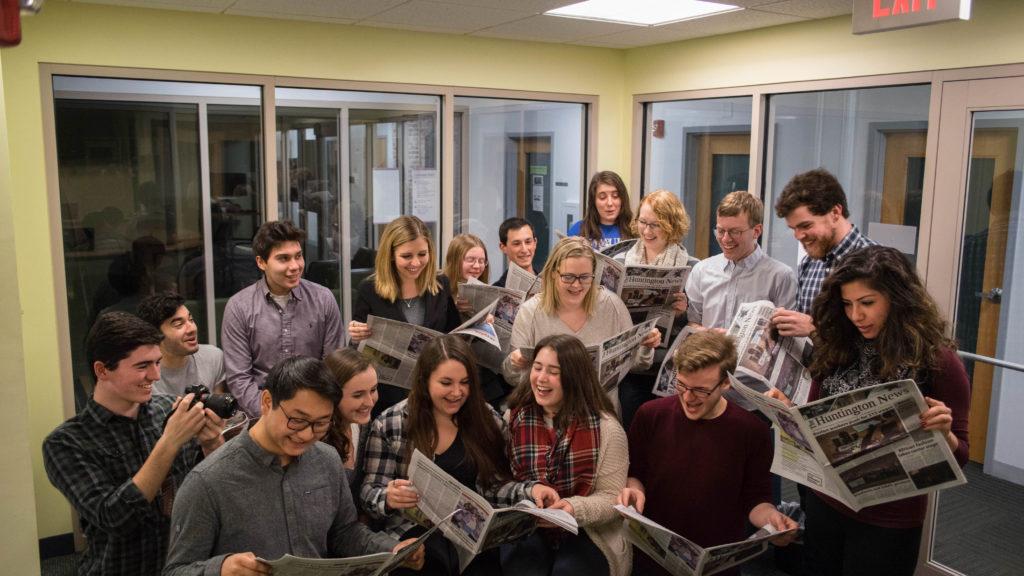Editorial: Student news lacks diversity in its staff
October 5, 2017
Journalists have trouble talking about themselves. They call themselves the fourth branch of government, yet rarely report on their own actions or how they may be influencing and interacting with the very public they’ve made it their mission to inform.
Self reflections are few and far between in the journalism community, reserved for upsets or scandals. Without reflection, problems go unchecked, and one of the biggest problems journalism has is a lack of diversity in newsrooms. It’s a problem that begins at student publications before many young journalists even work their first jobs.
There are a disproportionate amount of white reporters in newsrooms across the country. A study done by the American Society of News Editors (ASNE) in 2015 showed that more than 88 percent of reporters and their supervisors were white. Black and Hispanic reporters came in at just over 4 percent. These numbers contrast sharply with the percentages of minorities and whites that these news outlets should be representing. Minorities currently make up 38 percent of the U.S. population and by 2044 are expected to account for more than half of all Americans. Why then, do the institutions that claim to be the voice of the people not reflect those people?
The lack of diversity in newsrooms is an old problem for journalists. In 1978, ASNE attempted to address the issue by making a pledge to match the percentage of people of color in the association with the percentage in the general population by 2000. In 1998, after realizing they would not meet that goal, they extended that deadline to 2025. We are now less than a decade away from 2025 and still unlikely to fulfill that 1978 pledge.
With no journalists of color in newsrooms, key perspectives are lost. Stories about specific communities are best understood by the people who come from those spaces. Without reporters who have that understanding, these stories get told less frequently and less thoroughly. No minority group is a monolith, which is why it’s necessary to have a wide variety of minorities in newsrooms: to ensure the diversity in thought that is afforded to white reporters is also afforded to journalists of color.
The biggest newsrooms in the country have shown that they are either unable or unwilling to increase their diversity, which makes it even more important that student newspapers increase their efforts to have more staff diversity. Student newspapers are often the first journalistic experience young reporters gain and can be stepping stones to jobs at media outlets across the country. The more these newspapers encourage people of color to join their staffs, the more experienced journalists of color will be joining the workforce. If diversity becomes the norm even before stepping foot into a professional newsroom, it will be less likely that a lack of diversity will continue to go unchecked.
The News recognizes we do not reflect the kind of the diversity that we’re calling for and have made it a goal to not only increase our staff’s diversity, but to make an additional effort to represent the diversity on campus in our content. It is our hope that our paper will be an accurate reflection of the Northeastern community, and we are working to include the active minority communities on campus.
Northeastern has 42 cultural groups and a number of cultural centers on campus including The John D. O’Bryant African-American Institute, The Asian American Center and The Latino/a Student Cultural Center, according to Undergraduate Admissions. It is the goal of The News to work with these groups to learn more about the kinds of stories they feel are lacking in our pages and report on the great work they are doing with the students on this campus.
We are also currently working with the journalism department to lead recruitment efforts at local high schools to encourage Boston Public School students to study journalism, particularly at Northeastern. An important aspect of this recruitment process for The News will be reaching out to high schools with larger numbers of minority students in the hopes that we will inspire more journalists of color.
Increased diversity begins with increased interest and in inspiring new journalists we will be doing our part to address the lack of diversity.
File photo by staff.







